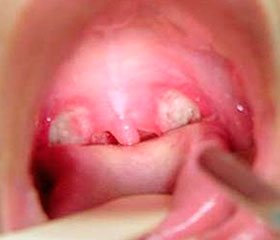Журнал «Здоровье ребенка» (62) 2015. Тематический выпуск "Детская гастроэнтерология"
Вернуться к номеру
Diet therapy in young children with rotavirus infection
Авторы: Olkhovska O.M. — Kharkiv National Medical University, Kharkiv
Рубрики: Педиатрия/Неонатология
Разделы: Клинические исследования
Версия для печати
The number of cases of diarrhea caused by rotavirus, to which young children are especially sensitive, increases each year. Unfortunately, by this time etiological treatment of rotavirus infection (RI) is not completely developed. The primary measures in the treatment of patients with RI are diet and rehydration (oral and parenteral). Compliance rational diet for RI is crucial, given the pathogenetic features of diarrhea. After invasion rotavirus causes destruction of "mature" epithelial microvilli resulting in damage to the cytoskeleton of epithelial cells. Accumulation of excess unhydrolyzed carbohydrates, preferably lactose in the intestine, disorders of reabsorption of water and electrolytes are major factors in the development of watery osmotic diarrhea. Therefore, the use low- lactose and/or lactose-free mixtures in young children with acute intestinal infections is essential precondition for a quickly recovery.
Purpose - to study the efficacy of lactose-free mixture in the diet of children with rotavirus gastroenteritis.
Materials and methods. 65 children aged 3 months-18 months with RI were observed. Before admission to the hospital all children were bottle-fed. Complex therapy conducted generally-accepted methods. The main group consisted of 32 children to whom «Nutrilon» lactose-free mixtures in the diet were used. Control group consisted of 33 children, comparable in age and background, diet therapy which continued to ordinary adapted mixtures that were used in feeding before hospitalization. «Nutrilon» lactose-free mixtures were administered during the whole course of the disease and for the next two weeks in the period of convalescence.
In severe conditions feeding had been carried out every 2 hours up to 50-60 ml, combining it with oral rehydration by small portions (1-2 teaspoons every 5-10 minutes). When the regression of clinical symptoms started the volume of single feeding had been increased and multiplicity of feeding per day had been reduced. Along with the generally accepted methods of examination, the determination of the content of secretory immunoglobulin A (sIgA) in coprofiltrates in acute and early convalescence period were done.
Results and discussion. We found good perception of patients «Nutrilon»-lactose-free mixtures - by no means observed failure of the child (mixture has good taste, homogeneous, without forming lumps), allergic reactions was not registerated. In all children the course of RI was moderate severe with acute onset of illness. Clinical symptoms characterized by disorder of general condition, mild catarrhal manifestations and diarrheal syndrome. In 29 (90.6%) children of the main group and 30 (90.9%) children of the control group the temperature was increased to 38,6±0,540 C.
Catarrhal syndrome manifested by mild cough (46.9% and 45.5% respectively in groups), runny nose (59.4% and 66.6% in groups), hyperemia of the mucosa of the oropharynx (81.3% and 84.8%), wheezing in the lungs (15.6% and 18.2% respectively in both groups).
All children had watery stools with undigested food admixtures yellowish in color, frequency of bowel movements reached 6,3 ± 1,55 and 7,23 ± 1,08 times a day during the first one or two days of illness.
Analysis of the dynamics of clinical symptoms had showed that in children with lactose-free mixture in diet accelerated regression of symptoms of general intoxication as well as local abnormalities of the gastrointestinal tract compared with the control group was observed. Particularly significant the difference was in terms of normalization of stool frequency (4,08 ± 0,26 and 4,87 ± 0,21 days respectively in groups, P˂0,05), elimination of pathological admixtures in the stool (3,54 ± 0,31 and 4,46 ± 0,28 days, P˂0,05), elimination the phenomena of flatulence (2,43 ± 0,21 and 3,38 ± 0,41respectively in groups, P˂0,05). Positive effect of diet children of the main group affected the reduction of terms of these children in hospital as compared to the control group, but the difference was not probability reliable, P˃0,05
We determined the content of sIgA in coprofiltrates of patients of both groups in acute and early convalescence period. Our results suggest that children with RI in acute stage a significant increase in the levels of sIgA coprofiltrates was observed, indicating the tension in the local protective factors. By the early period of convalescence (5-6 day illness) sIgA content in coprofiltrates decreased, but a significant decreasing of sIgA content occurred in patients with lactose-free mixture in diet, P˂0,05. Attention is drawn to the fact that in the early recovery period concentration of sIgA was different from the physiological at patients of both groups, P˂0,05.
This gives reason to believe that recovery in these children was not fully complete. Therefore, despite the significant clinical improvement in almost all indicators, children with RI require some attention in the stages of rehabilitation, and above all long adherence to a balanced diet. We recommend saving a diet lactose-free mixture to those children for at least two weeks.
Conclusion. Thus, the use of «Nutrilon»- lactose-free mixture in diet therapy of children with rotavirus promotes rapid clinical recovery, resulting in a rapid normalization of stool frequency, elimination of pathological admixtures in the stool, elimination of flatulence. The positive impact lactose mixture to dynamics of sIgA in coprofiltrates of patients was observed. Rational use of lactose mixture allows correcting the diet in the acute period of the disease and the stages of recovery.

